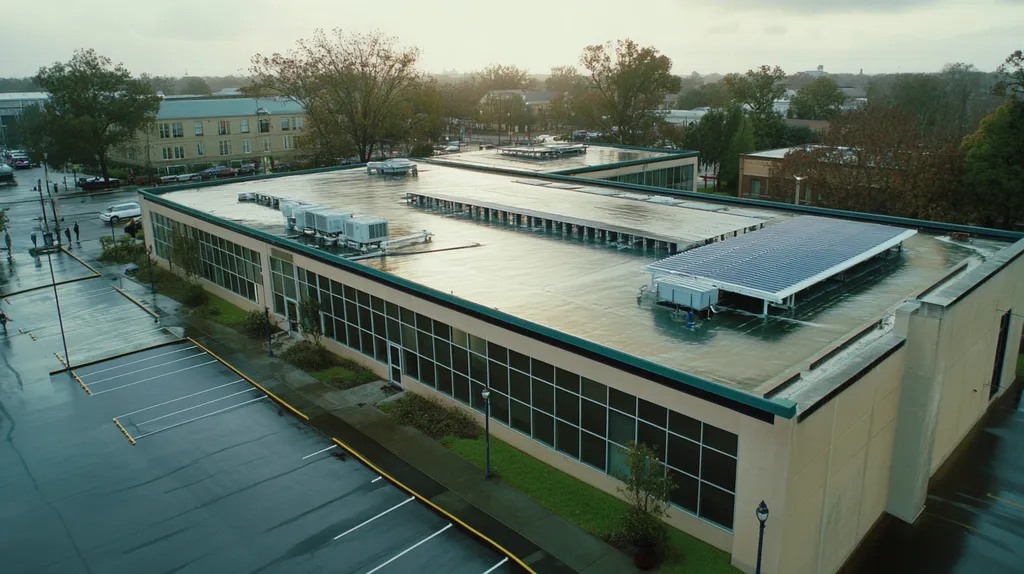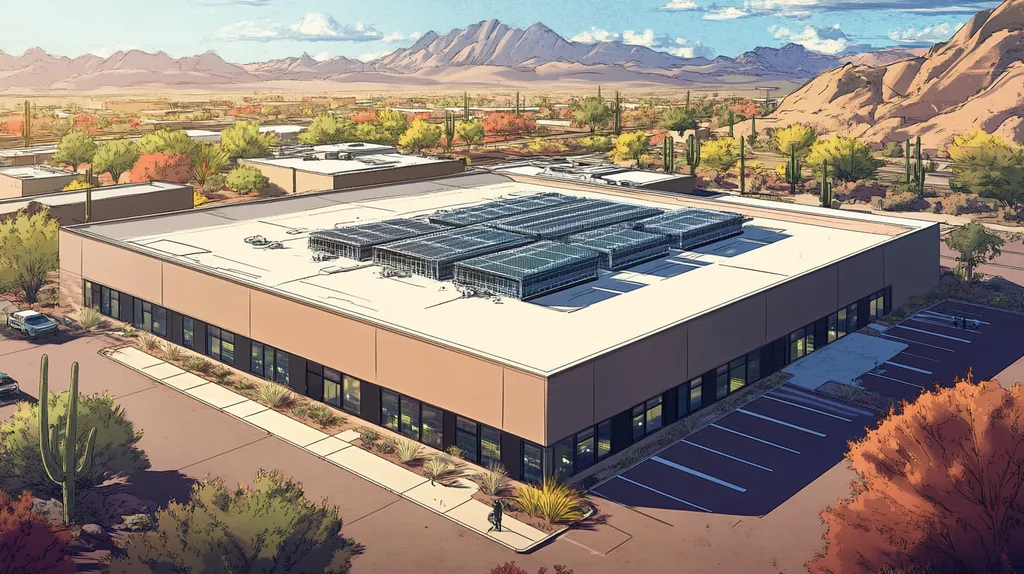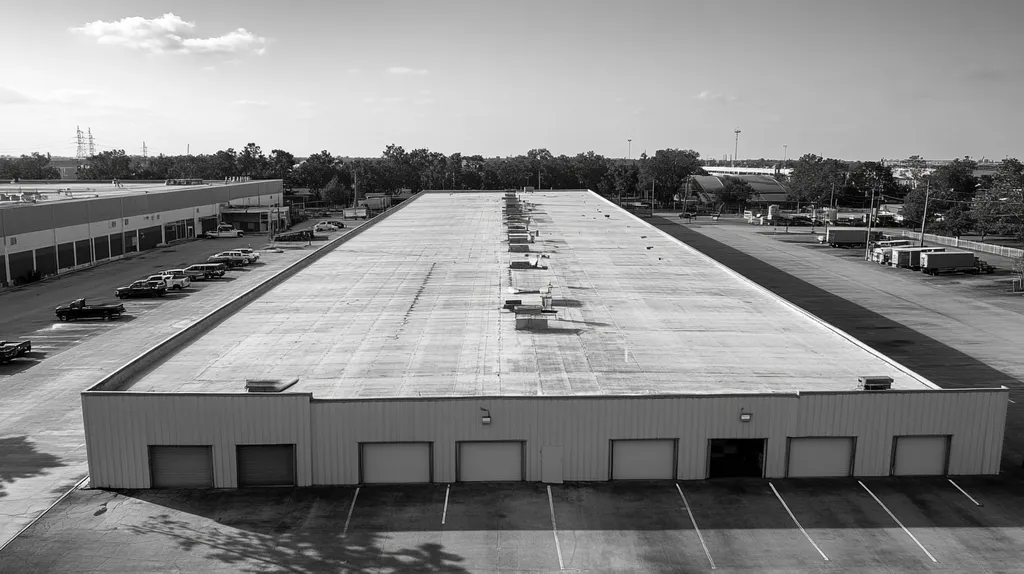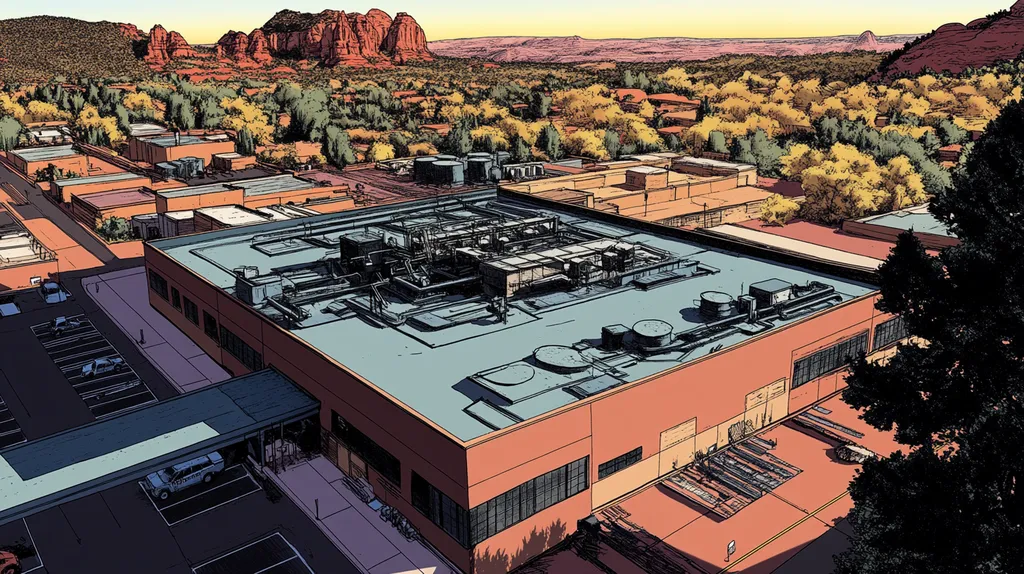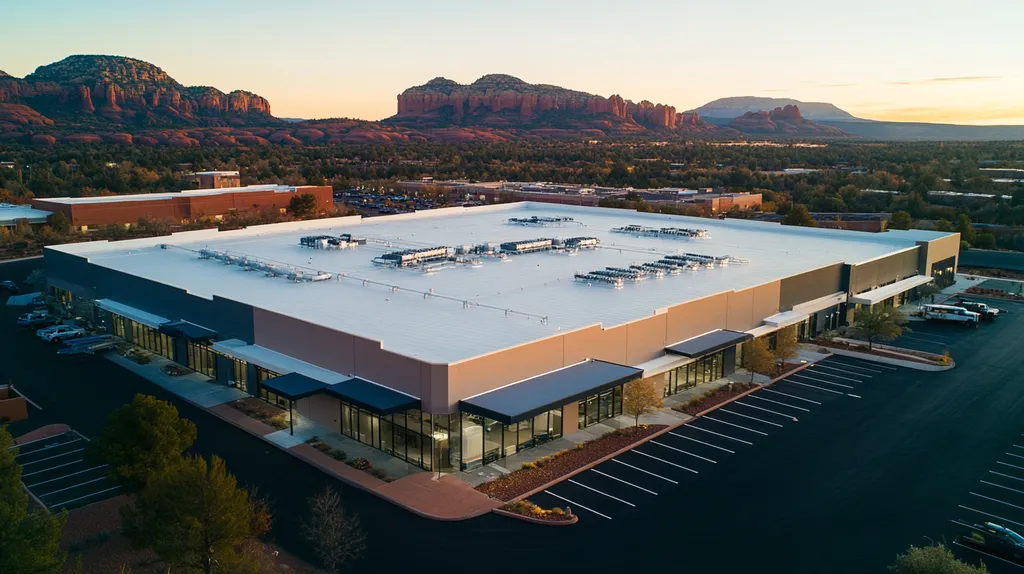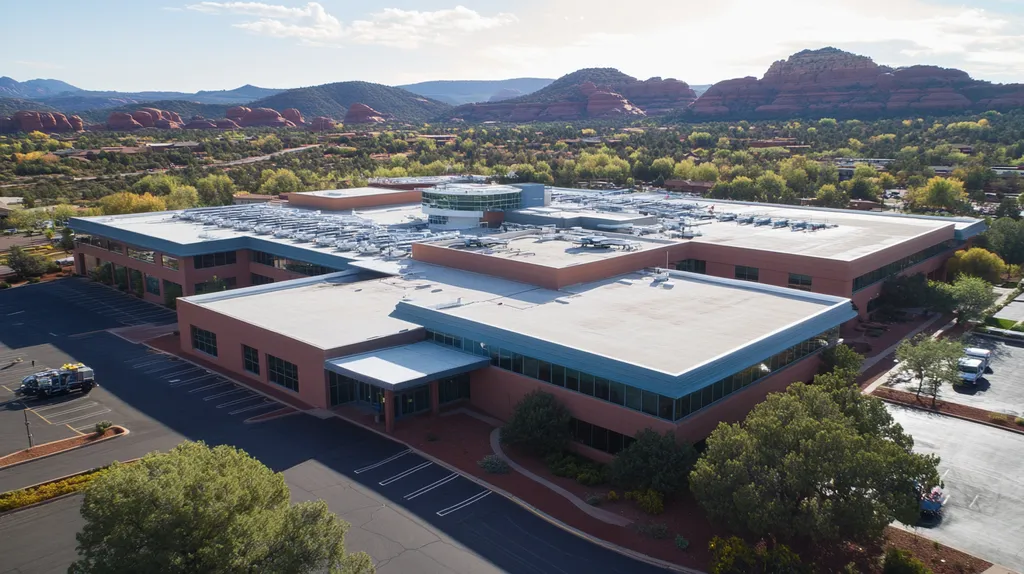In the world of industrial roofing, coating thickness isn’t just a technical specification – it’s the difference between a roof that lasts 20 years and one that fails in 5. Research shows that improper coating thickness accounts for over 40% of premature roof failures, costing facility owners millions in unnecessary repairs and replacements.
While many believe thicker coatings automatically mean better protection, this oversimplification leads to costly mistakes. The reality involves a delicate balance of proper thickness, quality materials, and expert application.
This comprehensive guide separates fact from fiction, exploring how coating thickness truly impacts industrial roof performance and longevity through real-world evidence and expert analysis.
SECTION 1: COMMON MISCONCEPTIONS
When it comes to industrial roofs, understanding the role of coating thickness is crucial. Many property owners and facility managers underestimate how this seemingly small detail can have a major influence on the lifespan and performance of a roof. For instance, research shows that roofs with insufficient coating can deteriorate 30% faster than those that are properly maintained. This section aims to debunk common misconceptions about coating thickness, highlighting myths, application standards, and the importance of following manufacturer guidelines.
Coating Thickness Myths
One of the biggest myths in the world of roofing is that applying a thicker coating always guarantees a longer-lasting roof. While it sounds logical, this oversimplification ignores essential factors like coating material quality, application methods, and ongoing maintenance. In fact, applying too much coating can cause problems such as peeling, cracking, and ultimately, a weakened roof structure.
This misconception frequently leads owners to spend unnecessarily on excessive coating applications, assuming they’ll get improved durability. However, following recommended thickness guidelines can actually optimize roof performance. Thicker isn’t always better; achieving the right balance is key for durability.
Another prevalent myth suggests that any roof coating will extend a roof’s lifespan, regardless of its current condition. This mindset can encourage facility managers to skip crucial repairs prior to coating application. Without addressing issues like leaks or structural weaknesses, even the highest-quality coating can’t shield a failing roof.
Recognizing these myths is essential for making savvy roofing choices. Armed with accurate information, property owners can avoid unnecessary expenses and adopt maintenance strategies that genuinely contribute to the longevity of their industrial roofs.
Incorrect Application Standards
Roof coating application standards can differ significantly, and many facility managers may not understand the importance of following specific guidelines. Unfortunately, incorrect application often arises from a lack of knowledge or training about the materials involved. If coatings are applied improperly, their performance suffers, and the roof’s lifespan could be dramatically shortened.
A common mistake is ignoring the environmental conditions in which coatings are applied. For instance, applying products in extreme temperatures or high humidity can weaken adhesion and lead to failures. Such oversights can also create moisture traps, giving rise to mold and structural damage.
Additionally, some managers might skip vital preparation steps like cleaning and priming surfaces. This negligence can inhibit coating adhesion, resulting in disastrous outcomes. While cutting corners might seem efficient, the long-term consequences can outweigh any short-term savings.
By adhering to established application standards, property owners can greatly enhance the durability and lifespan of their roofs. Making informed decisions during the application process fosters better investments, eventually leading to cost savings over time.
Ignoring Manufacturer Guidelines
Manufacturers often provide detailed guidelines for their products to ensure optimal performance and safety. Yet, many facility managers tend to overlook these vital resources. Ignoring manufacturer recommendations can result in significant problems, including shortened roof lifespan and inflated maintenance costs.
For instance, not following recommended coating thickness can influence a roof’s ability to withstand harsh weather conditions. Some coatings have specific minimum thickness requirements to offer adequate protection and maximize their lifecycle. Disregarding these guidelines can drastically reduce the roof’s effectiveness.
Moreover, many facility managers fail to observe the recommended cure times set by manufacturers. Rushing through this process can lead to premature coating failure, necessitating extra expenses for repairs or replacements.
By prioritizing adherence to manufacturer guidelines, property owners can ensure their coatings perform as intended. This diligence is critical in maximizing the efficiency and lifespan of industrial roofing systems. (source: Kangaroo Flat Roofing)
SECTION 2: PRACTICAL IMPLICATIONS
The thickness of roof coatings significantly impacts the lifespan and performance of industrial roofing systems. Ignoring this critical detail can lead to shocking costs and premature failures. Research shows that roofs with inadequate coating thickness can lose as much as 25% of their expected lifespan. Understanding these practical implications is vital for effective facility management and budgeting strategies.
Impact on Roof Lifespan
The application of the right coating thickness can dramatically affect how long an industrial roof lasts. When applied correctly, coatings can add up to 15 years to a roof’s lifespan, providing much-needed protection against UV rays, extreme weather, and leaks.
However, thicker coatings don’t automatically guarantee stronger roofs. The quality of the coating material and proper application techniques are equally important. If these elements don’t align with established thickness standards, the protective benefits may vanish, compromising the integrity of the roof.
Furthermore, selecting optimal coating thickness can enhance energy efficiency. A thicker coating often improves reflective properties, leading to lower cooling costs during the warmer months. This energy-saving advantage not only benefits the environment but also positively impacts the property’s financial health.
By focusing on appropriate coating thickness, property owners and facility managers can maximize their roofing investments and significantly extend the longevity of their systems.
Effects of Inadequate Thickness
Inadequate coating thickness can trigger catastrophic failures that are both costly and disruptive. Thin coatings are prone to wear, meaning roofs can deteriorate rapidly under harsh conditions. For example, a roof with insufficient coating might develop peeling or blistering within just a few seasons.
Moreover, thin coatings do not adequately protect underlying materials from moisture and UV damage, speeding up their deterioration. This often leads to leaks that require urgent repairs, throwing a wrench into business operations and straining finances.
Experts estimate that inadequate coatings can force roof replacements much earlier than anticipated, sometimes within a short span of just 10 years. These unexpected expenses create significant budgeting challenges for facility management teams.
Proactively managing coating thickness protects the roof and ensures smooth operations, making it a priority for effective facility management.
Consequences of Over-Thick Coating
While thicker coatings may seem advantageous, there are important downsides to consider. Over-thick applications can lead to problems such as water pooling and moisture retention, which encourage mold and mildew growth that damages both the roof and indoor air quality.
Additionally, excessive thickness can result in cracking or flaking as coatings fail to adhere to the underlying material, causing uneven wear that necessitates costly maintenance or earlier reapplications.
Another critical factor is the added weight on the roofing structure. Industrial roofs have specific weight limits, and applying too much coating can cause structural stress. This may lead to potential violations of building codes, resulting in legal and financial repercussions.
The challenges posed by over-thick coatings highlight the need for a balanced approach, tailoring thickness to address the specific requirements of each roofing system. Consulting with roofing professionals is essential for determining the best practices for your roof.
SECTION 3: COST OF MISINFORMATION
The stakes for industrial roofing are sky-high, as misinformation about coating thickness can lead to hefty financial repercussions. Research shows that misjudging the right coating can cost facility owners up to 30% more over the roof’s lifetime. Grasping the real implications of coating thickness is vital for property owners to sidestep costly missteps. This section explores the financial setbacks that stem from misleading information, including bloated maintenance costs and the looming threat of premature roof replacement.
Financial Consequences of Errors
Misinformation about coating thickness can trigger significant financial pitfalls. If a roof is coated with inadequate thickness, it becomes prone to deterioration, resulting in skyrocketing repair costs as property owners face the need for more frequent maintenance.
For instance, a facility opting for a coating thickness that falls below manufacturer recommendations might accrue thousands of dollars in unnecessary expenses over time. These costs chip away at immediate budgets and pose a threat to long-term profitability.
But the financial consequences don’t stop there. If inadequate coating leads to water infiltration, businesses may suffer additional damage to equipment and inventory, compounding their financial strain.
This ripple effect of misinformation highlights how critical it is to understand the correct coating thickness. Ignoring these details can jeopardize budget forecasts and create avoidable financial burdens.
Increased Maintenance Costs
Misinformed decisions about coating thickness are directly tied to increasing maintenance costs. Thinner coatings wear out faster, forcing property managers to ramp up inspection and repair schedules.
A commercial roofing system requiring quarterly maintenance due to premature wear and failure can see costs balloon dramatically over time. These expenses can escalate, pushing annual maintenance budgets past their limits.
Additionally, regular repairs can disrupt day-to-day operations, leading to hidden costs associated with downtime. Such interruptions can substantially hurt productivity and revenue during crucial business periods.
By understanding the proper coating thickness, property owners can armor themselves against these mounting expenses, paving the way for more predictable and manageable maintenance budgets.
Premature Roof Replacement
The most serious consequence of misguided coating thickness choices is the looming risk of premature roof replacement. A coating that’s too thin can’t effectively protect underlying materials, often leading to structural damage.
The average lifespan of an industrial roof can plummet with inadequate coating, forcing facility owners into potentially costly replacements that could have been postponed for years. Such replacements not only bring eye-watering costs but also disrupt business operations.
In fact, some companies have reported replacement bills exceeding hundreds of thousands of dollars—a scenario often rooted in avoidable misinformation. This situation drains vital capital and sidelines resources that could be better spent elsewhere.
Thus, ensuring access to accurate information surrounding coating thickness is crucial for prolonging roof life and avoiding unnecessary financial strain caused by premature replacements.
SECTION 4: REALITY CHECK
The stakes are incredibly high when it comes to the lifespan of industrial roofs. A study by the National Roofing Contractors Association revealed that improper coating thickness can lead to premature roof failure, costing businesses thousands in repairs. Understanding how coating thickness impacts durability is crucial for property owners and facility managers. This section delves into the actual lifespan implications, the significance of proper installation, and the necessity of regular maintenance for long-term roof performance.
Actual Lifespan Based on Thickness
The thickness of a roof coating plays a direct role in determining its lifespan. For example, a coating that measures only 10 mils may need replacement in just five years. In contrast, a properly applied coat of 20 mils can last a decade or more with minimal issues.
Research indicates that thicker coatings excel at resisting weathering and UV damage. They also provide superior protection against moisture intrusion, which helps prevent costly leaks that could compromise the underlying structure.
It’s essential for business owners to realize that in this case, more is indeed more. Insufficient coating thickness can lead to significant expenses down the line, ultimately diminishing the return on investment for roofing projects.
Ensuring the right coating thickness can truly mean the difference between excellent roofing performance and a financial headache.
Role of Proper Installation
Even if the coating thickness is correct, improper application can massively undermine any benefits. A poorly applied coating may peel, crack, or lose adhesion, leading to the rapid deterioration of the roof.
For instance, if a facility manager opts for a high-quality coating but neglects to hire certified contractors, they risk wasting resources. Flawless installation guarantees that all performance attributes positively contribute to the roof’s integrity.
It’s crucial not to overlook the quality of materials and application method. Partnering with a professional contractor who adheres to manufacturers’ guidelines is vital. Following these standards is the key to maximizing the lifespan benefits that come from thicker coatings.
Ultimately, having experienced professionals handle installation can amplify the advantages of appropriate coating thickness, safeguarding investments and ensuring operational continuity.
Importance of Regular Maintenance
Regular maintenance is essential for prolonging the lifespan of any industrial roofing system, regardless of how thick the coating is. Routine inspections catch minor issues before they evolve into costly repairs.
For instance, a facility that schedules biannual inspections can quickly identify areas where the coating has worn thin or developed cracks. Addressing these issues early prevents more severe damage and significantly extends the roof’s life expectancy.
Moreover, maintenance provides opportunities to clean off debris that can degrade the coating over time. This proactive approach ensures that the benefits of suitable thickness and installation translate into lasting longevity.
Recognizing that maintenance complements thickness and installation empowers property owners to make informed decisions that protect their roofing investments.
SECTION 5: EVIDENCE-BASED ALTERNATIVES
Selecting the right coating thickness for industrial roofs isn’t just important; it’s critical. A mismatch can lead to premature failures, skyrocketing repair costs, and strain operational budgets. Alarmingly, industry studies indicate that roofs coated with optimal thickness can extend their lifespan by a staggering 50% or more. This section dives into essential standards, the importance of material quality, and best practices for application to ensure durable roofing solutions.
Optimal Coating Thickness Standards
Establishing optimal coating thickness standards is crucial for maximizing the lifespan of industrial roofs. Typically, a thickness of 20-30 mils is recommended for most commercial applications. This range not only provides strong protection against UV damage but also boosts durability against unpredictable weather elements.
Following these standards helps minimize the risk of leaks and surface erosion. For example, roofs coated with insufficient thickness often show wear within just 5-10 years, forcing expensive reapplications. In contrast, roofs that adhere to established guidelines can last 20 years or longer, translating to massive savings over time.
To ensure accountability, incorporating these thickness standards into roofing contracts is wise. Property owners should work with experienced contractors who can assess their specific needs and suggest appropriate thickness levels. Understanding and applying these standards is vital; neglecting them can lead to costly consequences.
Material Quality and Durability
Material quality is a game-changer for the lifespan of roof coatings. High-quality options like polyurethane and silicone deliver remarkable flexibility and resistance to environmental stressors. This flexibility allows coatings to expand and contract with temperature changes, ensuring they maintain their integrity over time.
In contrast, using cheaper materials can result in early failures, including cracking and peeling within just a few years. Notably, investing in premium coatings often reduces lifecycle costs significantly. While the upfront expense may be higher, it pays off with fewer repairs and replacements down the road.
The materials you select also influence energy efficiency. Advanced reflective coatings can dramatically reduce utility costs by minimizing heat absorption. Property owners should prioritize high-quality material selection as part of their long-term roofing strategy, yielding enduring benefits.
Best Practices for Application
Proper application practices are vital for ensuring the effectiveness of coating thickness. First and foremost, surface preparation is non-negotiable. Roofs need to be thoroughly cleaned to eliminate dirt, debris, and any existing coatings that could hinder adhesion. Skipping this critical step can lead to premature failures that are completely avoidable.
Additionally, application should occur under ideal weather conditions. Extreme temperatures or high humidity can compromise bonding, leading to issues down the line. Adhering to manufacturer guidelines regarding environmental conditions maximizes coating performance and longevity.
Training and certification for applicators is another key aspect that shouldn’t be overlooked. Skilled applicators who understand best practices can greatly reduce mistakes, ensuring the coating adheres correctly and is evenly applied. Regular monitoring and inspections post-application can also catch early signs of wear or failure, safeguarding the investment for years to come.
SECTION 6: TEST AND VERIFY
In the high-stakes world of industrial roofing, the importance of testing and verifying coating thickness cannot be overstated. Failing to execute proper inspections can lead to unexpected roof failures, resulting in hefty repair bills and lost productivity. Regular evaluations and effective monitoring do more than just prevent costly damages; they ensure that coatings function effectively throughout their lifespan. By committing to robust testing practices, facility managers can protect their assets and enhance their maintenance strategies.
Inspection and Testing Methods
Regular inspections and testing are essential for maintaining effective roof coatings. Quarterly visual inspections should be the norm to catch signs of wear and damage early. Additionally, using tools like dry film thickness gauges enables accurate measurement of coating thickness, ensuring it meets standards.
Infrared thermography serves as another valuable assessment tool, revealing the integrity of insulation and identifying moisture intrusion that could jeopardize the coating. These various inspection methods deliver critical insights, empowering facility managers to make informed maintenance decisions.
It’s crucial to meticulously document inspection results to track trends over time. This documentation serves as a baseline for future evaluations and facilitates proactive planning. Establishing a routine testing schedule is vital to ensure long-term roof performance and longevity.
Ultimately, engaging in regular inspections lays the groundwork for preserving an industrial roof, significantly enhancing its lifespan and functionality.
Monitoring Coating Performance
Once a roof coating has been applied, continuous monitoring of its performance becomes essential. Key metrics like adhesion strength, reflectivity, and moisture resistance must be regularly evaluated, as they play a critical role in the coating’s long-term durability.
Instruments such as adhesion testers can provide insights into how well the coating bonds to the roofing substrate. Reflectivity measurements are crucial, too, as they reveal how effectively the roof deflects harmful UV rays, thus contributing to energy efficiency.
Conducting biannual visual assessments for signs of discoloration, blistering, or cracking can help identify potential failures before they escalate. This proactive approach allows for timely interventions that can significantly extend the coating’s lifespan.
By implementing a thorough monitoring strategy, facility managers can ensure their roofs remain functional and efficient throughout their service life, safeguarding their investment for years to come.
Case Studies and Real-World Examples
Real-world scenarios highlight the importance of rigorous testing and verification in extending roof life. In one instance, a manufacturing facility adopted a robust inspection schedule, which uncovered significant wear in their coating after just two years.
By addressing the issue promptly, facility management applied an additional layer, extending the roof’s life by several years. In contrast, another facility that overlooked regular monitoring faced a catastrophic roof failure, leading to costly downtime and repairs.
An automotive plant that invested in advanced infrared thermography for moisture detection successfully identified problem areas early, avoiding expensive repairs. Their proactive measures preserved the roof’s integrity and minimized operational disruptions.
These case studies reinforce how effective testing and verification not only protect investments but also enhance efficiency and productivity across various industrial sectors.
The Bottom Line
With over 40% of premature roof failures linked to improper coating thickness, facility managers can’t afford to ignore this critical aspect of industrial roofing.
The evidence is clear: following manufacturer-specified coating thickness standards can extend a roof’s lifespan by up to 50%, while incorrect application leads to costly failures within 5-10 years.
Regular testing, proper installation by certified professionals, and adherence to material-specific guidelines are non-negotiable elements of success.
The choice between optimal coating thickness and cutting corners isn’t just about immediate costs – it’s about protecting millions in assets and ensuring business continuity for decades to come.
When it comes to industrial roofing, getting coating thickness right isn’t optional – it’s essential for survival.
FREQUENTLY ASKED QUESTIONS
Q. What are common misconceptions about coating thickness for industrial roofs?
A. Many believe that thicker coatings always mean a longer roof lifespan, which isn’t true. Factors such as coating quality, application methods, and maintenance also play critical roles. Applying excessive coating might even lead to problems like peeling, causing the opposite effect of what was intended.
Q. How does coating thickness impact the lifespan of a commercial roof?
A. The right coating thickness can significantly extend a roof’s lifespan. When applied correctly, coatings can enhance protection against UV rays and extreme weather, potentially adding up to 15 years. However, selecting the appropriate thickness is just as important as the quality of the coating material.
Q. What are the financial consequences of incorrect coating thickness for industrial roofs?
A. Incorrect coating thickness can lead to inflated maintenance costs and potential premature roof replacement. A roof coated inadequately can break down sooner than expected, resulting in increased repair expenses and causing disruptions for facility managers. Understanding proper thickness helps avoid these costly errors.
Q. How does improper installation affect the performance of an industrial roof?
A. Even with the correct coating thickness, improper application can undermine its benefits. Issues like peeling or cracking may arise if the application is not handled properly, significantly decreasing the roof’s durability. Hiring certified professionals is essential to ensure installation meets the necessary standards.
Q. What maintenance practices help prolong the lifespan of an industrial roof?
A. Regular inspections are vital for maintaining an industrial roof. Scheduling biannual assessments allows for early detection of wear and damage, ultimately preventing more expensive repairs. Additionally, routine cleaning can help maintain the coating’s integrity, ensuring you get the maximum benefits from the applied thickness.
Q. How can testing and verification improve industrial roof performance?
A. Regular testing and inspections are crucial for evaluating coating thickness and performance. Techniques like visual assessments and using dry film thickness gauges help in tracking coating condition. This proactive monitoring allows facility managers to make informed maintenance decisions, ultimately extending roof lifespan.
Q. What are best practices for applying coatings to commercial roofs?
A. Following best practices is essential for effective coating application. Start with thorough surface preparation to enhance adhesion and choose ideal weather conditions for application. Additionally, ensure that the contractors are trained and certified to minimize mistakes during the coating process.

